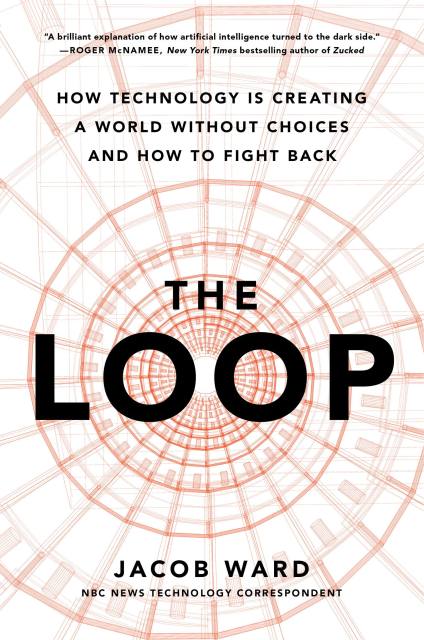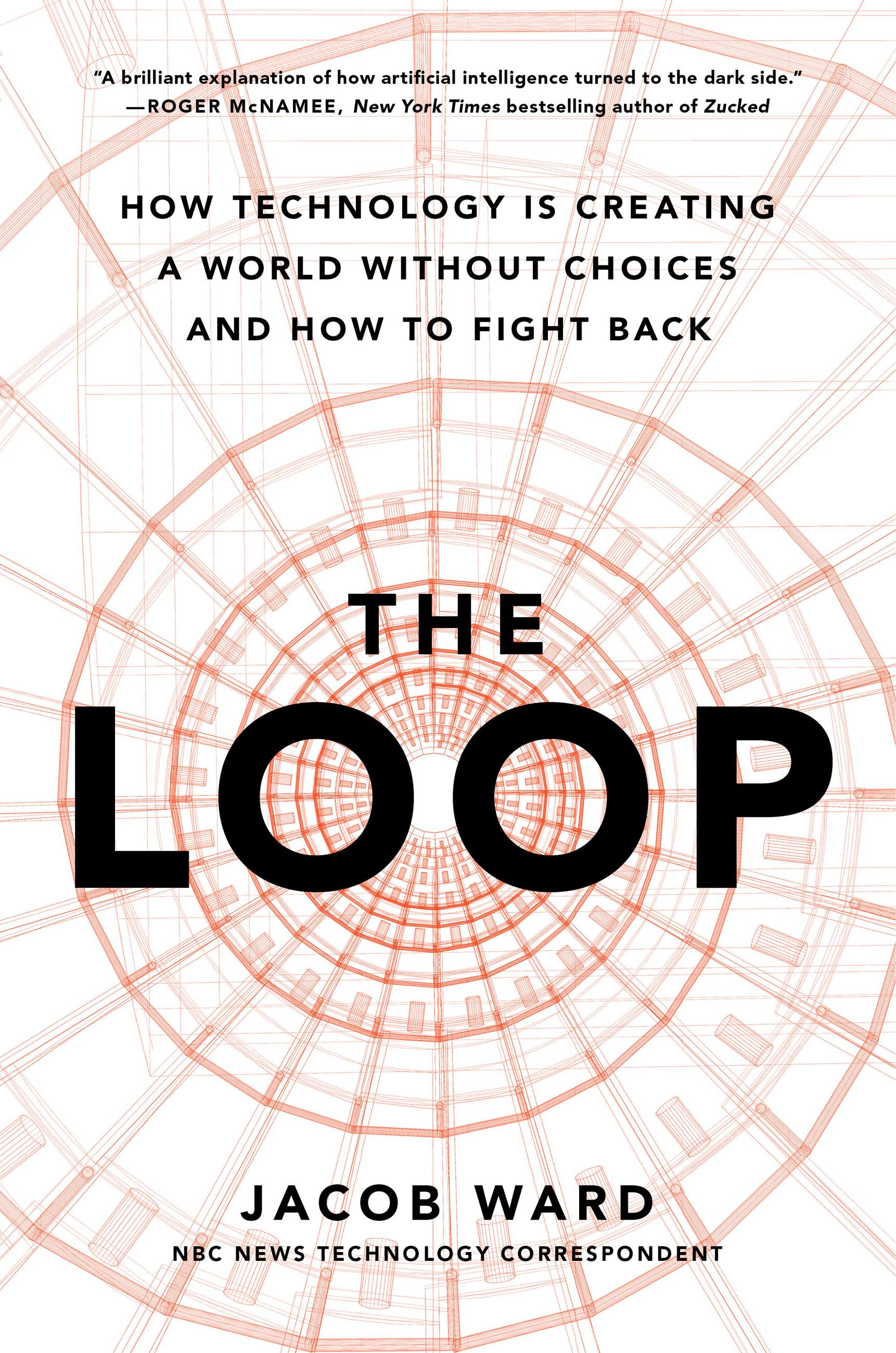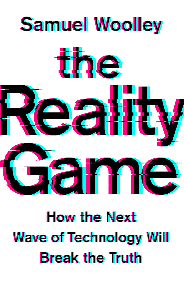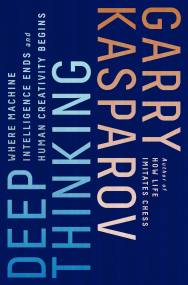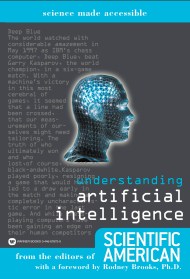Promotion
25% off sitewide. Make sure to order by 11:59am, 12/12 for holiday delivery! Code BEST25 automatically applied at checkout!
By clicking “Accept,” you agree to the use of cookies and similar technologies on your device as set forth in our Cookie Policy and our Privacy Policy. Please note that certain cookies are essential for this website to function properly and do not require user consent to be deployed.
The Loop
How Technology Is Creating a World Without Choices and How to Fight Back
Contributors
By Jacob Ward
Formats and Prices
- On Sale
- Jan 25, 2022
- Page Count
- 304 pages
- Publisher
- Grand Central Publishing
- ISBN-13
- 9780316487221
Price
$11.99Price
$15.99 CADFormat
Format:
- ebook $11.99 $15.99 CAD
- Audiobook Download (Unabridged) $27.99
- Trade Paperback $19.99 $25.99 CAD
This item is a preorder. Your payment method will be charged immediately, and the product is expected to ship on or around January 25, 2022. This date is subject to change due to shipping delays beyond our control.
Buy from Other Retailers:
This eye-opening narrative journey into the rapidly changing world of artificial intelligence reveals the dangerous ways AI is exploiting the unconscious habits of our minds, and the real threat it poses to humanity: "The best book I have ever read about AI" (New York Times bestselling author Roger McNamee).
Artificial intelligence is going to change the world as we know it. But the real danger isn't some robot that's going to enslave us: It's our own brain. Our brains are constantly making decisions using shortcuts, biases, and hidden processes—and we're using those same techniques to create technology that makes choices for us. In The Loop, award-winning science journalist Jacob Ward reveals how we are poised to build all of our worst instincts into our AIs, creating a narrow loop where each generation has fewer, predetermined, and even dangerous choices.
Taking us on a world tour of the ongoing, real-world experiment of artificial intelligence, The Loop illuminates the dangers of writing dangerous human habits into our machines. From a biometric surveillance state in India that tracks the movements of over a billion people, to a social media control system in China that punishes deviant friendships, to the risky multiple-choice simplicity of automated military action, Ward travels the world speaking with top experts confronting the perils of their research. Each stop reveals how the most obvious patterns in our behavior—patterns an algorithm will use to make decisions about what's best for us—are not the ones we want to perpetuate.
Just as politics, marketing, and finance have all exploited the weaknesses of our human programming, artificial intelligence is poised to use the patterns of our lives to manipulate us. The Loop is call to look at ourselves more clearly—our most creative ideas, our most destructive impulses, the ways we help and hurt one another-so we can put only the best parts of ourselves into the thinking machines we create.
-
“A fascinating survey of the known spectrum of human biases…rebuts the Silicon Valley-esque assumption that A.I. will always do good.”Cathy O'Neil, New York Times
-
"A fantastic, groundbreaking new book."Ali Velshi, MSNBC
-
“Scary stuff…this book has it all [and] the “how to fight back” part is very important.”Hoda Kotb, The Today Show
-
"A brilliant explanation of how artificial intelligence turned to the dark side, it’s that rare book that explains a complicated subject — AI — in language anyone can understand, while simultaneously providing the context that every policy maker and citizen will require to deal with it. If AI is to get back on track, then Ward will be the guide."Roger McNamee, bestselling author of Zucked
-
"Fascinating and unsettling. The future is here and Jacob Ward's lively narrative takes us headlong into the dangerous foray of artificial intelligence into our very core as humans."Cecilia Kang, bestselling author of An Ugly Truth
-
“The Loop is about the unconscious patterns of human behavior and the even less conscious patterns in the software of machine-learning algorithms. Jacob Ward argues, precisely and elegantly, that those magisteria overlap—digital algorithms that take advantage of wobbly human habits increasingly determine how society works, and that may well make us all less happy and less free. When a reporter with Ward’s brains and experience warns you about something this serious, you should listen.”Adam Rogers, bestselling author of Proof and Full Spectrum
-
“Ward is a thoughtful reporter who has spent the past decade chronicling the rise of a new set of tools pioneered by social scientists, AI researchers and technology companies. The Loop is simultaneously his powerful account of these forces and a wakeup call to remind us that we retain the capability to escape the silicon tendrils of those who seek to exploit our unconscious tendencies.”John Markoff, Pulitzer Prize-winning author of Machines of Loving Grace: The Quest for Common Ground Between Humans and Robots
-
"A salutary effect of growing disillusionment with tech has been a shelf of excellent critiques. But The Loop is a strong entry in the canon...AI represents perhaps the ultimate shiny object. But Ward penetrates to the dark vacancy at its core."San Francisco Chronicle
-
“[The Loop] combines a remarkable synthesis of a mountain of behavioral science research about the human mind, and a travelogue through the world of artificial intelligence history and current practice.”Alexis Madrigal, KQED (NPR) Forum
Newsletter Signup
By clicking ‘Sign Up,’ I acknowledge that I have read and agree to Hachette Book Group’s Privacy Policy and Terms of Use
